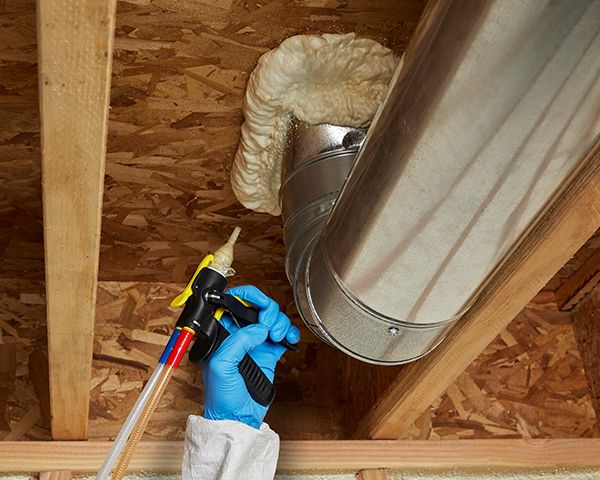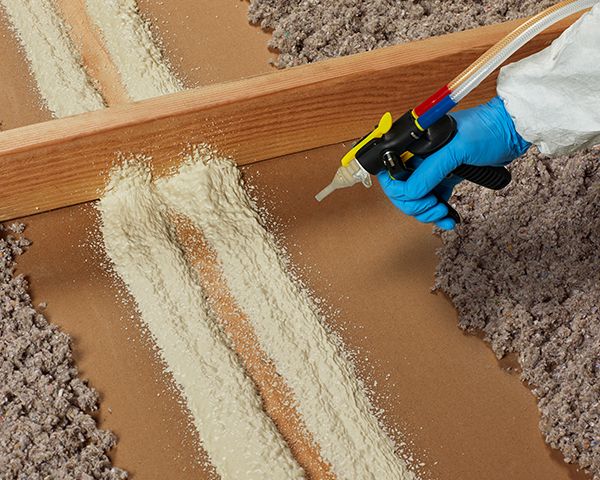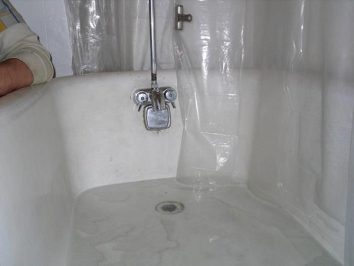Foam sealant is a chemical product generated by two components, isocyanate and polyol resin, these elements will expand for like 30 to 60 times when in their liquid form after spraying them in place. This expansion makes it ideal as a speciality packaging material that adapts to the contour of the object being wrapped and creates a high thermal insulating value with almost no air infiltration.
When sprayed from the can, insulating spray foam sealant, often known as “foam in a can,” provides insulation as well as sealing and adhesion to the area that has been sprayed with the polyurethane foam. One-component foams are used to cover cracks and gaps both inside and outside your house, as well as between floors and walls.

When an airtight, weather-resistant barrier is required, a foam sealant should be utilized. For example, if air leaks are developing around the house, which may result in higher energy costs, or if undesirable pests and rodents are entering the property via open gaps and crevices, these issues should be addressed immediately. Spray foam sealant may be used for a number of other difficulties as well, but always remember to read all product labels and take all necessary safety measures before using it on any project.
Applications of Foam Sealant
For example, openings surrounding electrical boxes (just outside the box), gaps where rodent or pest entry is possible; attic hatchways; basement/crawlspace; HVAC ducting; and places where more insulation and/or sound-proofing are required are all examples of places within a home where these problems might occur.

Some of the sites where siding meets the foundation, pipe penetrations (gas and electrical), in the garage (ceiling and wall joints), exterior faucets, vents, and beneath the eaves are examples of places where siding meets the foundation.
Some landscaping applications include: repairing wall elements such as stone, rock, or brick, repairing ponds and waterfalls and directing water flow, and securing loose bricks or blocks in their original locations.
How to Use Foam Sealant
Foams come in a variety of types. Multi-purpose; flame resistant; window & door; landscape; mouse/pest; professional strength. Make careful to read all product labels and information to ensure that you are purchasing the correct product for your project.
Maximum Expanding Foam Sealants: Increase the size of the gap using maximum expanding sealants. An energy-saving sealant that is water-resistant and may be used both inside and outdoors to seal and insulate wiring, plumbing, HVAC ducting, basements and crawl spaces as well as sill plates and attic hatches, among other applications.
Minimum Expanding Foam Sealants: These sealants are useful for filling up minor cracks and gaps up to 1 inch in width and height. Energy loss may be reduced by using fillers, sealants, and insulation. Use it to keep drafts, vermin, and insects out of your home or office space. Indoor/outdoor usage in and around foundations, electrical outlets, pipelines, ducting, and other similar structures and infrastructure.
Multipurpose Foam Sealants: Indoor/outdoor application of multi-purpose sealants for filling, sealing, insulating cracks and gaps. In addition to air sealing, water-resistant materials may be employed for vehicle undercarriages and marine applications.
Flame Resistant Sealants: The name does not imply that these sealants are fireproof, but they will assist in slowing the spread of fire and smoke by cutting off the passage of oxygen via the service openings. Outside airflow is prevented.
A good choice for usage around windows and doors, these sealants are specially designed to assist minimize damage to the window and door frames as well as to the surrounding woodwork. Due to its flexibility and resistance to water, the foam may be expanded and contracted with ease. It is possible for frames to get deformed if you use a larger expanding foam, which makes it harder to open and close the window or door without damaging it.
To be used on landscaping projects, landscape adhesive sealants have high adhesion to the surface. Repair loose pebbles as well as stones in walls, or on any porous or nonporous surface, including sand and gravel. Pond Repair and maintenance may be accomplished using this material.
Ant, roach, spider, bee, mouse, and other pests and rodents are kept out of undesired places using mouse/pest sealants, which are specially formulated. A foam barrier that can fill fractures and gaps up to an inch in width and depth. Suitable for indoor/outdoor usage around foundations, sill plates, HVAC ducting, beneath eaves, attic entryways, and crawl spaces. It is also water-resistant.
Professional Strength Sealants: The majority of professional strength sealants will require the use of a foam applicator gun and it can be found in a variety of different forms, based on the job at hand, including maximum expanding, minimal expanding, and window and door sealants, among other varieties.
Advantages of Using Foam Sealants
Foam Sealants have several advantages, including the following:
- Can be used for constructing airtight seals
- Water-resistant
- A barrier against pests and rodents
- Sound-proofing
- Insulation
- Withstands fire (specific brands and formulas)
- Using water to direct the flow of a project in the landscape
- Rigid
We spoke to a representative from Robafoam, who has a lot of knowledge on the topic at hand and they said, “Taking all necessary safety measures is critical for every construction job, regardless of its size or complexity. Always read and follow the directions on product labels. It is important to prevent skin contact with foam sealant and to wear gloves and safety glasses when working with it. It is also important to provide for proper air movement while working with it.”
Conclusion
Foam sealants, like other types of insulation, may help you save money on energy expenditures and reduce your electricity bills. Buildings treated with spray foam insulation perform up to 50% better in terms of insulation than those treated with typical insulation solutions. Insulation, when correctly installed, may be used as part of a moisture-proofing system, which has the added advantage of minimizing the likelihood of dangerous mould, mildew, and rotting of wood. Foam sealant is frequently used to minimize the noise in addition to controlling the temperature as well as moisture of a structure. When compared to an uninsulated structure, foam insulation acts as a sound barrier, reducing the transmission of airborne noises through a building’s roof, floor, and walls.
Loading recommendations...





This is such a timely piece, considering the current events. Your balanced view on the matter is commendable, and I appreciate the effort you put into researching and writing this about what is foam sealant and how to use it. Can’t wait to share it with my friends.
This post has showed me different types of foam sealant and their purposes. And the “How To Use” part is quite detailed. However, I found that there is a risk that the foam sealant solidify on your hands and it will be hard to remove. So remember to wear gloves when using the foam sealant.